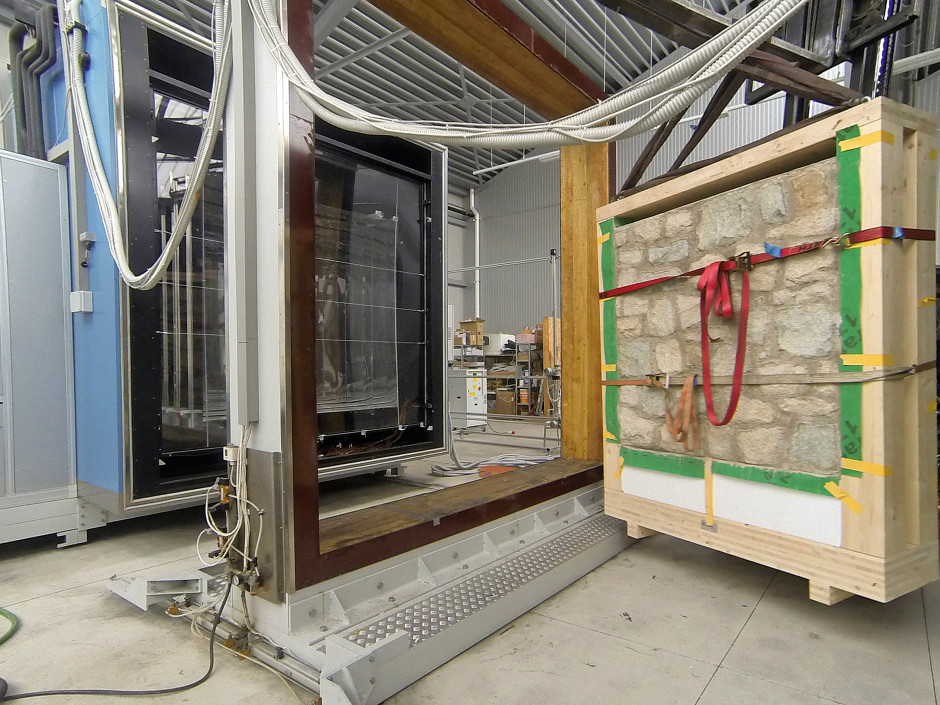Aerogel Insulation: From Mars to Historic Buildings
EURAC research is testing a new aerogel insulating wool from Scotland that can increase the thermal performance of Europe’s historic buildings by a factor of four. With labs around the world exploring the uncanny properties of these space-age materials, aerogels may soon prove instrumental in developing carbon-neutral historic buildings.
Two hundred million kilometres from Earth, in the amber glow of a Martian sunset, the six-wheeled Mars rover “Curiosity” prepares to go to sleep after a hard day’s work. The temperature on the red planet was 20 degrees at noon, but now a chilling cold is descending on the 900-kg vehicle. By three in the morning it will be minus 70. If the rover’s engineers had used standard insulation, the machine’s electronic components would freeze tonight. Curiosity, however, is safely protected by aerogel insulation.
Aerogels are a group of porous solid materials that exhibit an impressive range of physical properties. Among them, they have the lowest thermal conductivity of any solid known, which makes them perfect for the deep cold of space travel—and also for winters in Scotland. In a four-year study on energy efficient heritage districts, EURAC teamed up with a Scottish aerogel technology company to demonstrate how aerogels could be the future of building insulation.
Space Wool
Elena Lucchi, a senior researcher at EURAC, studies the energy efficiency of buildings. Her job is to find ways of raising the thermal performance of Europe’s historic building stock to meet the objective of a carbon neutral Europe by the end of the century. “One of the objectives of EURAC’s building envelope research,” says Lucchi, “is to evaluate the energy efficiency of new building material technologies. Putting up exterior or interior wall insulation in historic buildings compromises their aesthetic value or useable space, so we work with industry to look at viable alternatives. Blown-in aerogel insulation is one of them.” Lucchi and her team are studying the thermal behaviour of an aerogel fibre insulation product manufactured in Scotland by construction technology innovator, A. Proctor Group (APG). Recent testing in EURAC’s lab has demonstrated impressive thermal performance results from this woollen material when it is blown into the cavity behind the lath and plaster of old stonewalled buildings. Called “Spacefill” by APG, the product consists of a polyester fibre mesh impregnated with silica aerogel.
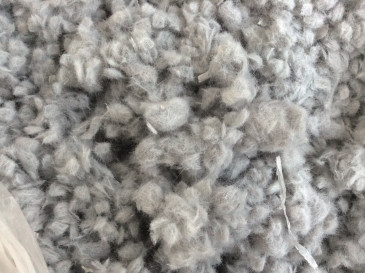
Thermal Dead Ends
First discovered in 1930 by a Stanford University professor, aerogel is produced by removing the liquid content from a conventional gel with a special drying technique. The resulting product retains its solid structure, but loses 99 percent of its water mass. Picture a bowl of panna cotta. If you took that gelatinous dessert and baked it in an oven, all the water content would evaporate and leave a pile of powder. With aerogel, the water content is removed through a ‘supercritical’ drying process that leaves a solid matrix of millions of tiny pores. The more common aerogels are made from silica. Their pores are part of a three-dimensional network of infinitesimally small particles of silica. The branches of this network finish in many “dead ends,” making thermal transport through the silica arduous. And the pores themselves are so small—only 20 to 40 nanometres across—that air molecules cannot pass through them, making thermal energy transfer by convection extremely difficult. Put a blowtorch under a one centimetre tile of silica aerogel and you won’t be able to melt a chocolate bar sitting on its surface.
Scottish Masonry versus Modern Technology
The astonishing thermal performance of silica aerogel is what interests the consortium of 23 research institutions and industry partners involved in the Effesus project, which is winding up this year. The project is dedicated to increasing the energy efficiency of historical districts by developing new technological materials such as aerogel insulation, special brick mortars, reflective coatings and high-performance windows. EURAC dovetails nicely into the project with its extensive competence in evaluating the energy efficiency of historic buildings and their energy retrofits.
The pores themselves are so small—only 20-40 nanometres across—that air molecules cannot pass through them.
For the aerogel insulation experimentation, EURAC was tasked with creating a 1.5 m2 replica of a heritage-building wall, constructed in the traditional Scottish manner. Putting the wall into the lab’s climatic chamber, they measured its thermal performance with and without the aerogel insulation. They found the R-value (thermal conductivity) was four times lower with Spacefill—meaning that it performed twice as well as the traditional insulations. In another part of the study, other members of the consortium prepared a demo site in Glasgow. A section of a traditional tenement house wall (dating from around 1910) was retrofitted with the aerogel product. “The results are very encouraging,” Lucchi says, “and the product is likely to be marketed by APG. Before it can be sold, though, the wool will have to go through other assessments to measure the material’s life cycle and sustainability. APG doesn’t have a commercial price for it yet.”
Related Articles
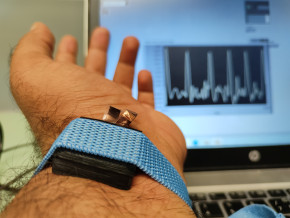
Tecno-prodotti. Creati nuovi sensori triboelettrici nel laboratorio di sensoristica al NOI Techpark
I wearable sono dispositivi ormai imprescindibili nel settore sanitario e sportivo: un mercato in crescita a livello globale che ha bisogno di fonti di energia alternative e sensori affidabili, economici e sostenibili. Il laboratorio Sensing Technologies Lab della Libera Università di Bolzano (unibz) al Parco Tecnologico NOI Techpark ha realizzato un prototipo di dispositivo indossabile autoalimentato che soddisfa tutti questi requisiti. Un progetto nato grazie alla collaborazione con il Center for Sensing Solutions di Eurac Research e l’Advanced Technology Institute dell’Università del Surrey.
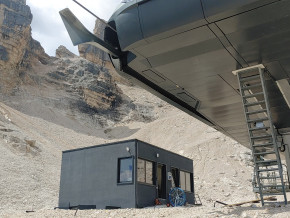
unibz forscht an technologischen Lösungen zur Erhaltung des Permafrostes in den Dolomiten
Wie kann brüchig gewordener Boden in den Dolomiten gekühlt und damit gesichert werden? Am Samstag, den 9. September fand in Cortina d'Ampezzo an der Bergstation der Sesselbahn Pian Ra Valles Bus Tofana die Präsentation des Projekts „Rescue Permafrost " statt. Ein Projekt, das in Zusammenarbeit mit Fachleuten für nachhaltiges Design, darunter einem Forschungsteam für Umweltphysik der unibz, entwickelt wurde. Das gemeinsame Ziel: das gefährliche Auftauen des Permafrosts zu verhindern, ein Phänomen, das aufgrund des globalen Klimawandels immer öfter auftritt. Die Freie Universität Bozen hat nun im Rahmen des Forschungsprojekts eine erste dynamische Analyse der Auswirkungen einer technologischen Lösung zur Kühlung der Bodentemperatur durchgeführt.
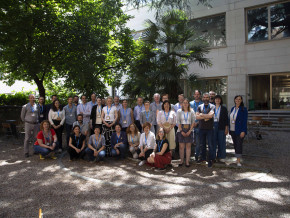
Gesunde Böden dank Partizipation der Bevölkerung: unibz koordiniert Citizen-Science-Projekt ECHO
Die Citizen-Science-Initiative „ECHO - Engaging Citizens in soil science: the road to Healthier Soils" zielt darauf ab, das Wissen und das Bewusstsein der EU-Bürger:innen für die Bodengesundheit über deren aktive Einbeziehung in das Projekt zu verbessern. Mit 16 Teilnehmern aus ganz Europa - 10 führenden Universitäten und Forschungszentren, 4 KMU und 2 Stiftungen - wird ECHO 16.500 Standorte in verschiedenen klimatischen und biogeografischen Regionen bewerten, um seine ehrgeizigen Ziele zu erreichen.
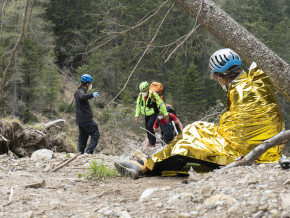
Erstversorgung: Drohnen machen den Unterschied
Die Ergebnisse einer Studie von Eurac Research und der Bergrettung Südtirol liegen vor.
